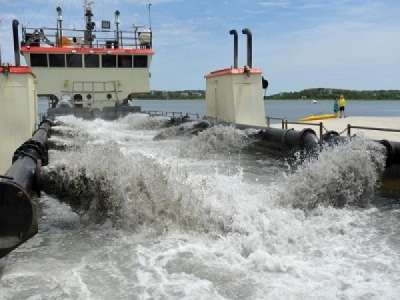
Posted on June 29, 2017
By Doug Fraser, Cape Cod Times
Lowering twin suction arms into the water, the federal dredge Currituck sucks sand out of the Stage Harbor channel, and into the open hopper running stem to stern in the 146-foot-long vessel.
A short steam away, and the clam shell bottom of the dredge swings open depositing as much as 315 cubic yards per load onto the bottom of the sea close to the shore of Andrew Hardings Beach.
It’s a process that’s repeated 24 hours a day, with crews working 12-hour shifts, from mid-June to just after the July 4th holiday, to clear as much as 50,000 cubic yards from the channel to make it 150 feet wide with a uniform 10-foot depth.
Movement of sand in the channel had reduced the depth to 4 feet in some places, according to Chatham Director of Coastal Resources Theodore Keon. Because commercial fishermen use it, the channel is federally maintained and there is no cost to the town.
Unlike other dredges, the Currituck — operated by the U.S. Army Corps of Engineers — requires no hoses or pumps on the beach, which means it can be used even when plovers or other endangered shorebirds are around. Dumping it just off Hardings Beach saves the expense of traveling far offshore to a dump site and also helps build the sand supply that hopefully will migrate to shore and form protective sandbars and berms.
The Currituck returns to dredge Stage Harbor and Aunt Lydia’s Cove every three to four years, Keon said. It could cost the town $500,000 or more to either use the county dredge or a private contractor.
“It’s our most heavily used harbor with well over 500 moorings,” Keon said. “The combination of the commercial fleet and the recreational fleet make it a very busy harbor and maintaining that channel is very important. It is our only true deep draft harbor.”
Source: Cape Cod Times





